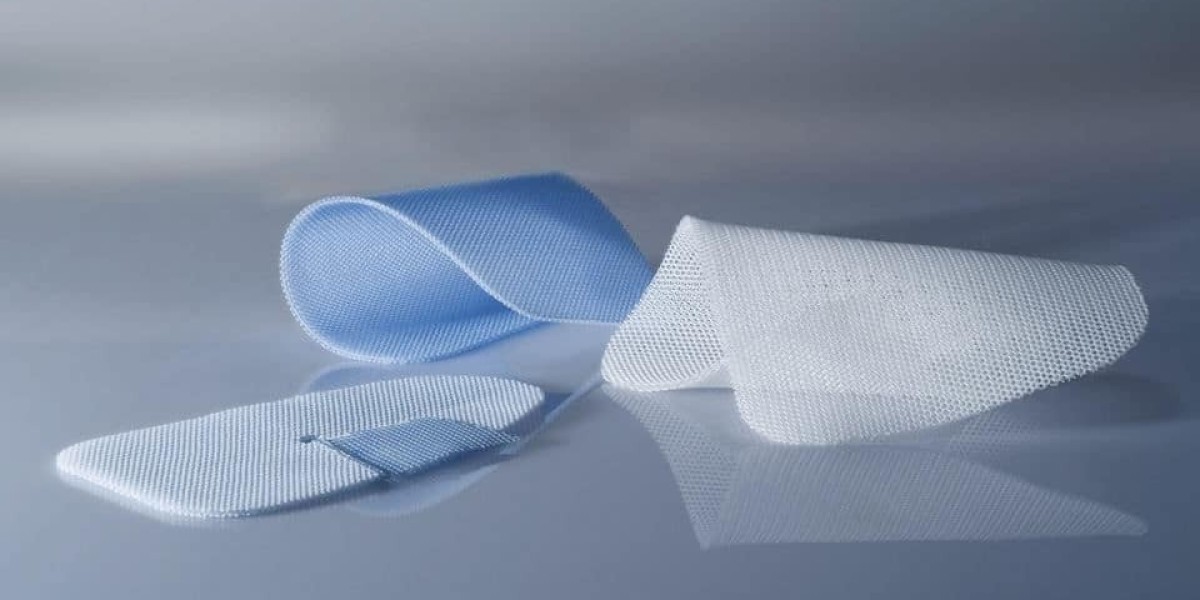What Are the Benefits of Using Biologic Mesh in Ventral Hernia Repair?
Biologic hernia mesh has gained increasing popularity in ventral hernia repairs due to its unique ability to integrate naturally with the body’s tissue. Unlike synthetic meshes, biologic meshes are derived from processed animal tissue, promoting cell growth and reducing the chances of rejection or infection. Biologic meshes allow for a more natural healing process, supporting tissue regeneration and reducing the risk of foreign body reactions.
Furthermore, recent innovations in biologic meshes focus on improving strength and elasticity. Leading companies like W.L. Gore & Associates Inc. have developed advanced materials like the GORE® SYNECOR Intraperitoneal Biomaterial, which combines a dual-mesh technology to facilitate both short-term repair and long-term support. This mesh is particularly useful in complex hernia cases where tissue needs to regenerate more effectively
.
2. How Long Does It Take to Recover from Minimally Invasive Hernia Mesh Surgery?
Recovery time from minimally invasive hernia mesh surgery, such as laparoscopic procedures, is typically faster compared to open surgery. Most patients can expect to resume normal activities within two weeks, though complete recovery might take up to six weeks depending on individual factors like the size of the hernia, age, and overall health. Minimally invasive surgeries are known for their smaller incisions, leading to less postoperative pain, quicker healing, and reduced scarring.
Innovations in surgical techniques also contribute to faster recovery. For example, robotic-assisted surgeries are being increasingly used, allowing for more precise mesh placements. Medtronic PLC is a key player in robotic surgical systems, offering solutions like Hugo™ RAS, a robotic-assisted surgery platform designed to enhance precision and reduce surgeon fatigue
.
3. What Are the Most Common Complications After Hernia Mesh Surgery?
Although hernia mesh surgery is generally safe, complications can arise, especially with synthetic meshes. Common issues include mesh rejection, infection, chronic pain, or recurrence of the hernia. Patients with synthetic mesh sometimes experience long-term discomfort, as their body may reject the foreign material, or the mesh could migrate or shrink, leading to further surgery.
To address these concerns, companies such as Ethicon Inc., a subsidiary of Johnson & Johnson, have been innovating in the field. Their PROCEED™ Surgical Mesh is designed to minimize adhesions and inflammation, reducing the risk of complications. Additionally, the use of lighter-weight and smaller-pore meshes helps to lower the chances of chronic pain by improving flexibility and patient comfort
.
4. How Does Synthetic Hernia Mesh Compare to Biologic Options for Ventral Hernias?
Synthetic mesh remains widely used due to its durability and cost-effectiveness. Unlike biologic mesh, synthetic options are typically made from materials like polypropylene or polyester, making them strong and capable of providing long-term support. However, the trade-off is a higher risk of infection and rejection compared to biologic mesh, especially in patients with compromised immune systems.
3M Company and B. Braun Melsungen AG have been at the forefront of innovations in synthetic hernia mesh, focusing on developing lightweight and antimicrobial meshes. 3M’s V.A.C. VERAFLO™ Therapy integrates negative pressure wound therapy with an antimicrobial mesh to improve healing and reduce infections post-surgery
Top Technologies and Innovations in Hernia Mesh Devices
The hernia mesh device market has witnessed several technological breakthroughs in recent years. Apart from biologic and synthetic materials, the integration of nanotechnology and smart devices is revolutionizing the market. These new technologies are designed to improve outcomes, reduce complications, and enhance patient comfort:
Wireless Monitoring: Certain hernia mesh devices now feature wireless sensors that allow healthcare professionals to monitor patients remotely, helping detect complications early. This technology, spearheaded by companies like GE HealthCare Technologies Inc., is proving essential for postoperative care.
Patient-Centric Design: Innovations focus on creating softer, more flexible meshes that adapt to the body’s movements, reducing discomfort. Companies like Cook Medical Inc. are developing shape-memory meshes that conform to the body’s contours and help distribute pressure evenly, minimizing the risk of recurrence.
These advancements are shaping the future of hernia mesh repair, offering patients safer, more effective solutions. The focus on minimally invasive techniques, advanced materials, and post-surgical monitoring continues to drive growth in the hernia mesh device market
| More info . | MarketResearchFuture | Related report | academic medical center market | |
| adeno associated virus aav vector based gene therapy market | ||||
| ai in oncology market |










